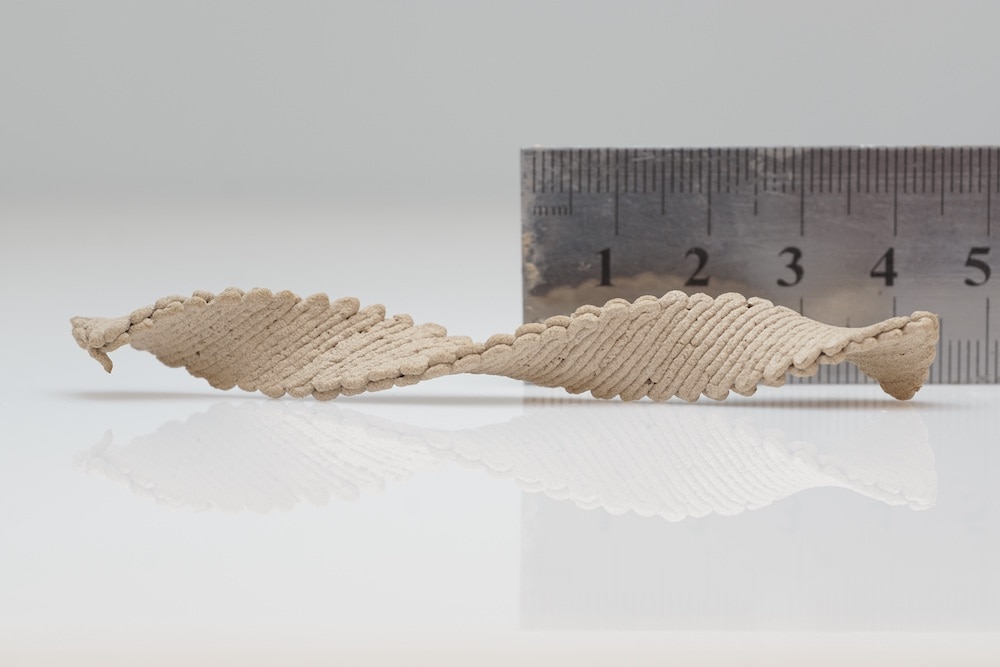Create a free profile to get unlimited access to exclusive videos, sweepstakes, and more!
3D-printed wood furniture could ship flat and self-assemble at home
It's like a slowly occurring magic trick.

The ability to drastically change your shape is hailed within the pages of comic books and movies as one of the premier superpowers. The Hulk (now streaming on Peacock!) pulls it off through a combination of gamma radiation exposure — despite the fact that gamma radiation doesn’t work that way — and uncontrolled anger.
Of course, nature has its own set of impressive transformations. All organisms change over time, either through the ordinary process of growth or through incredible and complex metamorphoses, but some change more than others. We often think of trees as stoic and mostly unchanging, at least over short timescales. They stand resolute in our forests, swaying gently in the breeze, but their rigid bodies don’t offer much in the way of transition, right? Not so fast.
The morphology of wood is such that it harbors the ability to make drastic shape changes, especially after it’s dead. Anyone who has left a piece of untreated wood outside for too long has likely seen the way it warps after the moisture has evaporated. Generally, that’s bad news for anyone hoping to use that wood in a project, but the natural deformation characteristics of wood are inspiring a new kind of manufacturing.
Doron Kam, a PhD student at the Hebrew University of Jerusalem, and colleagues, have developed a method for replicating the natural deformation of wood in a more controlled setting using 3D printing. Their process results in complex shapes including saddles and helices and could set the stage for the future of furniture manufacturing and shipping. Their results were presented at a recent meeting of the American Chemical Society.
“When you chop down a tree water evaporates, but because of the way the cells are aligned, you have an uneven volume decrease. You get warping. We thought of doing the same thing with 3D printing,” Kam told SYFY WIRE.
Researchers took wood waste particles, known as wood flour, and combined them with binders to create a printable wood ink suitable for 3D printers. Such an ink can be produced by cutting down trees and grinding them up, but it can also be produced from already existing waste products like broken furniture or even the cotton fibers from old clothing. This material offers an alternative to plastics which are highly controllable and long lasting, but not nearly as sustainable.
In living trees, the warping comes from the loss of humidity as the wood dries and the uneven way in which its fibers lose moisture over time. Scientists duplicate this process by way of humidity in the printing material. Once a flat shape is laid down on the build plate it starts to lose moisture and the fibers inside the wood ink deform depending on their orientation.
“We’re using extrusion-based 3D printing which usually uses plastic filament and produces plastic waste. The concept is really similar. We’re tuning the printing speed, the flow of the material, to make them more or less aligned and this results in different curvature when it dries,” Kam said.
By laying down lines of wood filament at different speeds next to one another, or in layers on top of one another, researchers can control the kinds of curvature the object achieves once it has dried. To date, they have made relatively simple shapes as a proof of concept, but nearly any shape could be hypothetically achieved with the right combination of speeds, orientations, and layers.
“We don’t have full control of the forces yet, but we have a really good understanding of the mechanisms going on. As we move forward, the industry could go in many directions,” Kam said.
How and when the printed object deforms into its permanent configuration is related to the rate at which it loses moisture. That means that in the future, it could be possible to print furniture at a manufacturing site, ship it as a flat package while it still retains moisture, and then set it up at home. You could hypothetically set up your new flat chair in your living room or kitchen, go to work, and come home to a finished product which assembled itself through the power of physics while you were away.
Today, once a shape has been achieved, it can’t be reversed, but that might change in the future. Researchers are looking at ways in which they might be able to reintroduce humidity and reverse the process. If they can pull it off, it would certainly make packing and moving a whole lot easier.


























